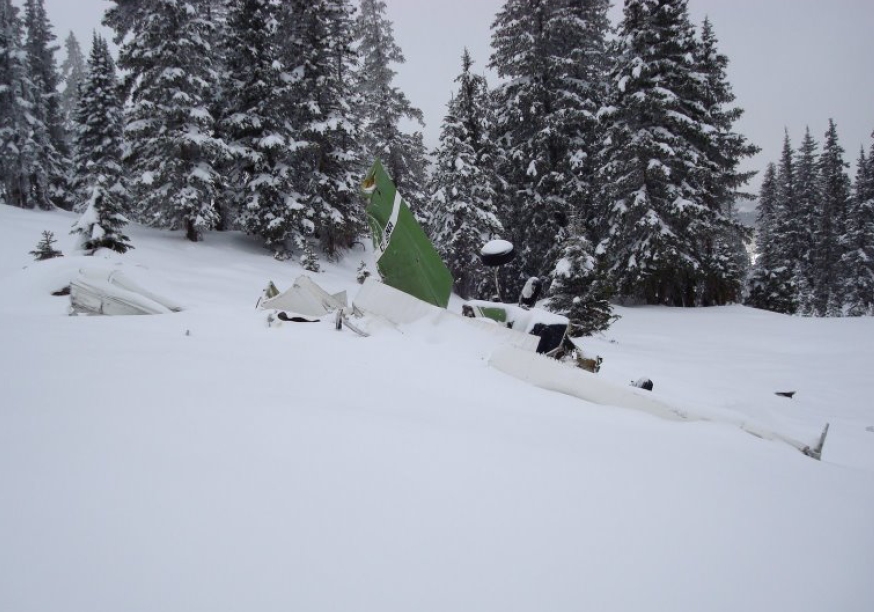
ASN Wikibase Occurrence # 48472
This information is added by users of ASN. Neither ASN nor the Flight Safety Foundation are responsible for the completeness or correctness of this information.
If you feel this information is incomplete or incorrect, you can submit corrected information.
| Date: | Tuesday 11 November 2008 |
| Time: | 15:30 |
| Type: |  Cessna 182M Skylane |
| Owner/operator: | Private |
| Registration: | N71276 |
| MSN: | 18259558 |
| Year of manufacture: | 1969 |
| Total airframe hrs: | 3840 hours |
| Engine model: | Continental O-470 Series |
| Fatalities: | Fatalities: 1 / Occupants: 1 |
| Aircraft damage: | Substantial |
| Category: | Accident |
| Location: | 16 miles from Aspen, CO -
 United States of America United States of America
|
| Phase: | En route |
| Nature: | Private |
| Departure airport: | Denver, CO (BJC) |
| Price, UT (PUC) | |
| Investigating agency: | NTSB |
| Confidence Rating: |
The single-engine airplane went missing and was the subject of an ALNOT (Alert Notification). The following day, the airplane wreckage was located in rugged terrain. An initial on-site examination was conducted; however, due to the remote location of the site, the rugged terrain, and deep winter snow, the airplane was not recovered until late the following summer (approximately 9 months later) for a more detailed examination. A review of the airplane’s radar track showed that the airplane was heading westbound at an altitude of 14,800 feet before disappearing from radar. Prior to the last radar contact at 1530, the airplane appeared to be in a rapid decent indicative of having lost control. Examination of the airplane wreckage showed extensive fragmentation and aft crush damage to the forward fuselage and both wings. Flight control continuity was confirmed and no pre-impact anomalies were discovered with the airplane. Prior to departure, the non-instrument-rated pilot received a standard weather briefing from the Automated Flight Service Station (AFSS). The briefing included an advisory for mountain obscuration and icing conditions along his intended route, and recommended against Visual Flight Rules (VFR) flight. Later, the pilot contacted AFSS and received a standard briefing, which included an advisory for mountain obscuration. The briefing also included forecasts for several locations en route which indicated VFR conditions prevailed at those locations, but with multiple layers of clouds. A review of the weather conditions near the site at the time of the accident indicated that the airplane was over an overcast layer of clouds and was likely in instrument meteorological conditions and exposed to icing conditions.
Probable Cause: The non-instrument-rated pilot's continued visual flight into instrument meteorological conditions, which resulted in his loss of control of the airplane in flight.
Accident investigation:
 |
|
Sources:
NTSB
Location
Images:

(c) NTSB
Revision history:
| Date/time | Contributor | Updates |
|---|---|---|
| 13-Nov-2008 10:45 | harro | Updated |
| 16-Nov-2008 00:18 | RobertMB | Updated |
| 07-Dec-2009 12:17 | harro | Updated |
| 21-Dec-2016 19:25 | ASN Update Bot | Updated [Time, Damage, Category, Investigating agency] |
| 03-Dec-2017 12:11 | ASN Update Bot | Updated [Operator, Other fatalities, Departure airport, Destination airport, Source, Narrative] |
Corrections or additions? ... Edit this accident description
The Aviation Safety Network is an exclusive service provided by:


 ©2024 Flight Safety Foundation
©2024 Flight Safety Foundation